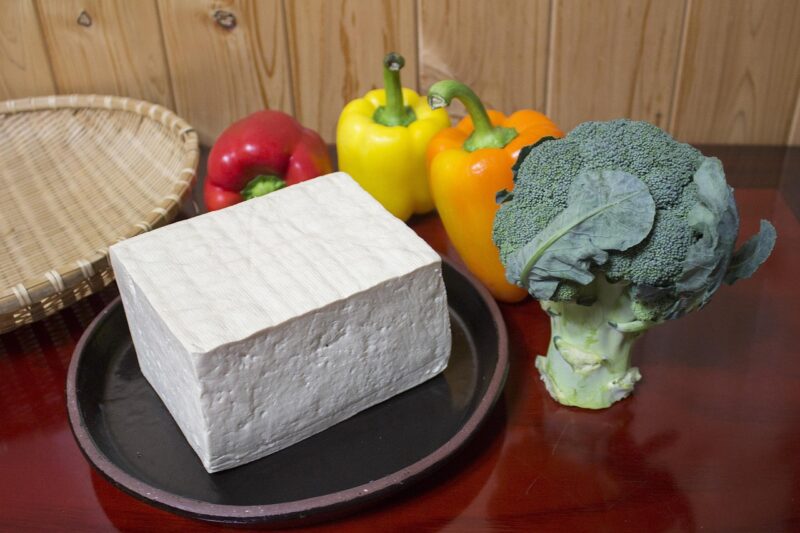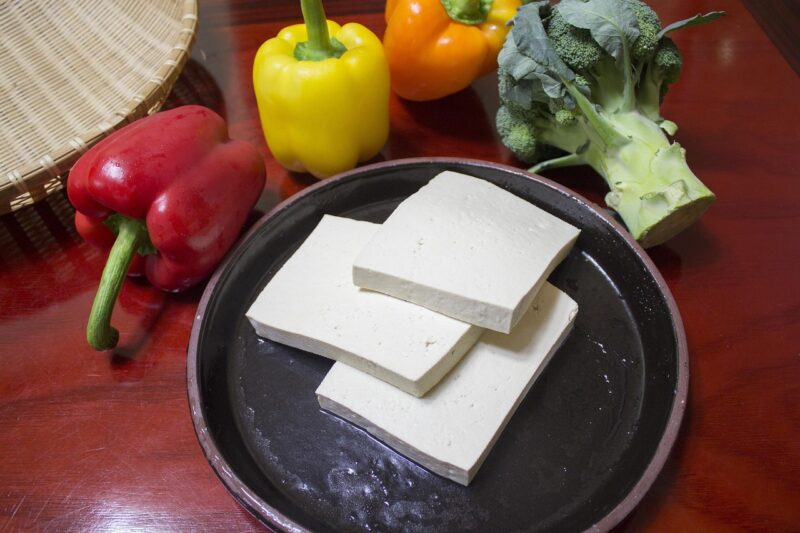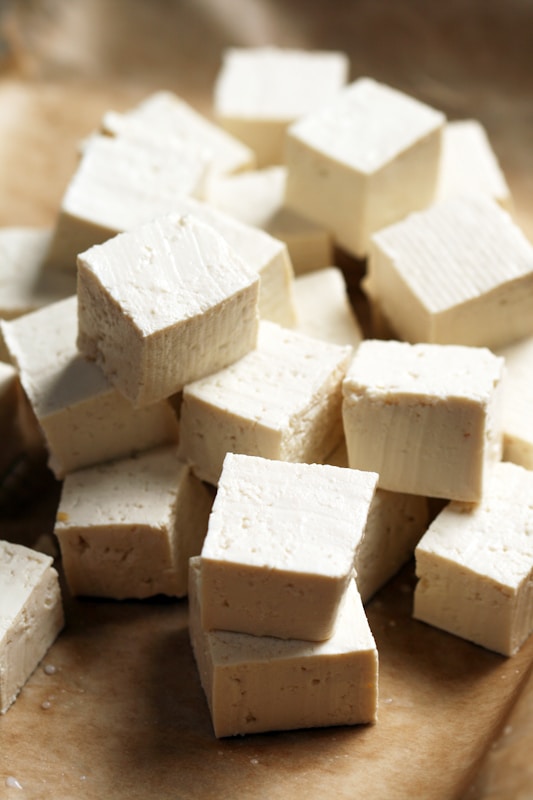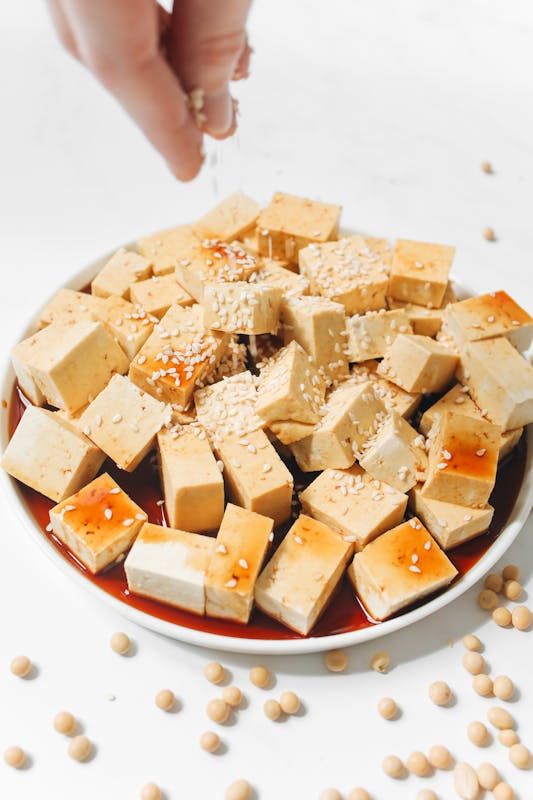Can you freeze tofu? The answer is a definite yes! Freezing tofu not only prolongs its freshness but can also change its texture in delightful ways. In this post, we will explore the ins and outs of freezing tofu, from how to do it properly to the best ways to use thawed tofu in your meals. Let’s embark on a journey through the world of tofu, its benefits, and the magic that freezing can bring.
Can You Freeze Tofu?
Yes, you can freeze tofu! But there are a few things to keep in mind to ensure the best results.
Why Freeze Tofu?
Freezing tofu has a multitude of benefits:
Extended Shelf Life: Freezing prolongs the usability of tofu, allowing you to buy in bulk and reduce food waste.
Textural Transformation: The freezing process alters the texture, giving tofu a firmer, chewier bite that many find appealing for certain recipes.
Convenience: Thawed tofu can absorb flavors better, making it a fantastic base for marinades and sauces.
How to Freeze Tofu
Freezing tofu is a straightforward process. Here’s how to do it effectively:
Choose Your Tofu Type: Firm or extra firm tofu works best for freezing, as silken tofu can become overly mushy.
Drain and Press: Remove the tofu from its packaging. Drain any excess liquid and press it lightly between paper towels to remove more moisture. This step helps improve texture after thawing.
Cut into Portions: If you know how you plan to use the tofu later, cut it into smaller pieces or cubes. This makes it easier to use directly from the freezer.
Freezing: Place the tofu in a freezer-safe container or plastic bag. Squeeze out as much air as possible to prevent freezer burn.
Label and Date: It’s always a good idea to label your bags or containers with the date and contents for easy access later.
Freeze: Place in the freezer. Tofu can be frozen for up to five months, although using it sooner is preferable for the best quality.
Thawing Frozen Tofu
Once you’re ready to use your frozen tofu, proper thawing is essential:
Refrigerator Thawing: The best method is to transfer the tofu to the refrigerator and let it thaw overnight.
Quick Thawing: If you’re short on time, place the sealed tofu bag in a bowl of warm water for about an hour.
Drain Excess Liquid: After thawing, squeeze out any excess water, as frozen tofu can retain quite a bit.
Now that we’ve covered the how-to, let’s explore what happens to tofu when it’s frozen and the various culinary delights you can create with thawed tofu.
The Texture Change: What to Expect
One of the most fascinating aspects of freezing tofu is its textural evolution. Many people perceive tofu as overly soft or spongy; however, freezing transforms it into a firmer, chewier staple.
Ice Crystal Formation
When tofu freezes, ice crystals form within its structure. This process breaks down the proteins and creates air pockets, leading to a spongy texture that soaks up sauces and marinades exceptionally well after thawing. This change allows the tofu to act almost like a sponge, intensifying flavors and absorbing seasonings in a way that fresh tofu might not.
Culinary Uses for Thawed Tofu
Once your tofu has been frozen and thawed, you might find yourself inspired to experiment in the kitchen. Here are a few delicious ways to use thawed tofu:
Stir-Frys: Tofu cubes work wonderfully in stir-fries. The spongy texture captures the sauce perfectly, giving each bite a burst of flavor. Pair it with your choice of vegetables and a savory sauce for a quick meal.
Grilling: Marinated tofu slices make for a fantastic addition to a barbecue. The firm texture holds up well on the grill, providing a delightful char.
Soups: Thawed tofu can add heartiness to soups, particularly Asian-inspired broths like miso or pho. It’s a delightful addition that contributes both protein and texture.
Salads: For a protein boost, crumble thawed tofu onto salads. It can provide a satisfying texture when seasoned well.
Casseroles: Cubed tofu can bring depth to casseroles. It absorbs the flavors from the other ingredients, enriching your dish.
Flavoring Tofu: Maximizing Taste
One common misconception about tofu is that it has no flavor. In reality, tofu is a blank canvas, welcoming an array of flavors. To maximize its taste, especially after freezing, consider the following techniques:
Marinades: The Ultimate Flavor Infuser
Marinating tofu is one of the simplest yet most effective ways to add flavor. Here’s a guide to crafting the perfect marinade:
Base: Start with oil (like sesame or olive oil) to help with absorption.
Acidity: Add acids like soy sauce, vinegar, or citrus juice for depth.
Sweetness: A touch of honey or maple syrup can balance the acidity.
Spices and Herbs: Don’t shy away from your favorite seasonings! Garlic, ginger, and fresh herbs can elevate your marinade.
Allow the tofu to marinate for at least 30 minutes, or even overnight, for the best results. The spongy texture after freezing makes it exceptionally receptive to these flavors.
Cooking Techniques to Enhance Flavor
The cooking method can also transform the flavor profile of your tofu:
Baking: Baking tofu can result in crispy edges while keeping the inside tender. Consider tossing it in cornstarch before baking for a delightful crunch.
Pan-Frying: A quick pan-fry allows the tofu to develop a golden-brown crust. Pair it with a hot sauce or soy glaze for an extra flavor punch.
Broiling: Broiling tofu can produce intense caramelization while leaving the inside moist. It’s perfect for adding a rich texture.
Steaming: For a lighter option, steaming tofu can preserve moisture and enhance its natural flavor, making it a healthier choice.
Common Questions About Freezing Tofu
As you embark on your tofu-freezing journey, you may have some lingering questions. Let’s address a few common queries.
Does Freezing Tofu Change the Nutritional Value?
Freezing tofu does not significantly impact its nutritional quality. While some water-soluble vitamins may diminish, the main benefits—protein, calcium, and iron—remain intact. So, you can freeze with confidence knowing that your nutritional intake won’t suffer.
Can You Refreeze Thawed Tofu?
It’s best to avoid refreezing thawed tofu. The quality may decline, and the texture could become mushy upon subsequent freeze-thaw cycles. If you’re unsure about how much you’ll use, consider freezing in smaller portions to minimize waste.
Does Freezing Tofu Change the Taste?
Freezing can enhance the flavor of tofu after thawing, allowing it to absorb marinades and spices more effectively. However, it doesn’t change the fundamental taste of tofu—just its ability to take on other flavors.
Recipes to Try with Frozen Tofu
Now that you’re eager to experiment with frozen tofu, let’s share some recipes that showcase its unique qualities:
Spicy Sesame Tofu Stir-Fry
Ingredients:
1 block of frozen and thawed tofu
2 cups mixed vegetables (bell peppers, broccoli, and snap peas)
2 tablespoons sesame oil
3 tablespoons soy sauce
1 tablespoon chili paste (adjust for spice preference)
2 cloves garlic, minced
1 tablespoon ginger, minced
Sesame seeds for garnish
Green onions for garnish
Instructions:
Press the thawed tofu to drain excess liquid and cut into cubes.
In a hot pan, heat sesame oil and fry the tofu until golden.
Add minced garlic and ginger, stir-frying for 1-2 minutes.
Introduce the mixed vegetables and cook until just tender.
Stir in soy sauce and chili paste, mixing to combine.
Serve garnished with sesame seeds and chopped green onions.
Baked BBQ Tofu Bites
Ingredients:
1 block of frozen and thawed tofu
1 cup BBQ sauce (homemade or store-bought)
1 tablespoon olive oil
Salt and pepper to taste
Instructions:
Preheat the oven to 400°F (200°C).
Drain and press the tofu, cutting it into bite-sized cubes.
In a bowl, mix tofu with olive oil, salt, and pepper.
Coat the tofu with BBQ sauce.
Arrange on a baking sheet and bake for 25-30 minutes, or until crispy, turning halfway through.
Conclusion: Embrace the Versatility of Freezing Tofu
In summary, freezing tofu is not only possible; it can enhance your culinary experience. With a few simple steps, you can keep this nutritious staple on hand for whenever inspiration strikes in the kitchen. The texture change allows for a delightful evolution in how tofu absorbs flavors, providing opportunities for creativity in countless dishes.









